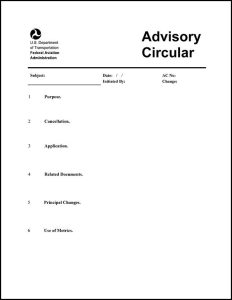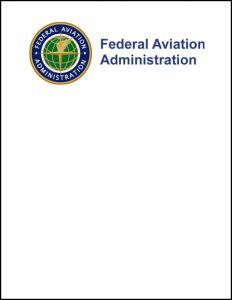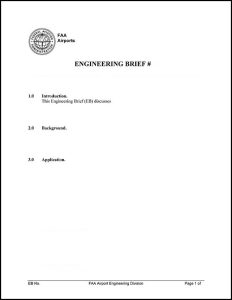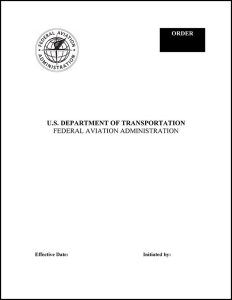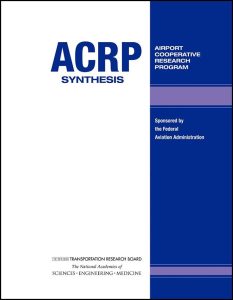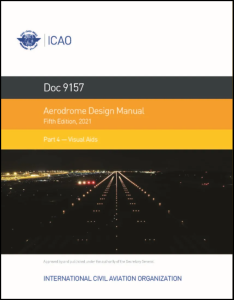To narrow the library of airside resources, use the filter boxes or airport map below or search box above.
Click an item below to expand.
Resources Matching Your Search
2022
This advisory circular (AC) contains the FAA standards and recommendations for airport design. The AC contains the following chapters: (1) Introduction, (2) Design Principles, (3) Runway Design, (4) Taxiway and Taxilane Design, (5) Aprons, and (6) Airfield Systems and Facilities. It also contains the following appendices: (A) Aircraft Characteristics, (B) Wind Analysis, (C) Jet Blast and Propeller Wash, (D) End-Around Taxiway Visual Screens, (E) General Aviation Facilities, (F) Compass Calibration Pad Survey, (G) Runway Design Standards Table, (H) Declared Distances, (I) Runway Additional Information, (J) Taxiway Additional Information, (K) Instrument Flight Procedures, (L) Approach and Departure Reference Codes, (M) Differences in Airport Design Standards and Relationship of Aircraft Characteristics to Design Components, (N) Acronyms, and (O) Index.
2020
This advisory circular (AC) contains FAA standards for the siting and installation of signs on airport runways and taxiways. Airport sign systems provide visual cues to pilots and vehicle operators, and enhance safe and efficient movement within the airfield. Elevated signs protect aeronautical surfaces and convey ground navigation information that enhances situational awareness when maneuvering on the airfield. The standards of this AC establish uniformity of sign systems throughout the National Airspace System (NAS) for consistent application and interpretation.
2018
This advisory circular (AC) provides guidance and recommendations on the installation of airport visual aids, including runway and taxiway edge lighting systems, runway centerline and touchdown lighting systems, taxiway lighting systems, land and hold short lighting systems, rotating beacons, wind cones, obstruction lights, MALSF, ODALS, REILs and PAPIs.
2018
The standard specifications contained in this advisory circular (AC) relate to materials and methods used for construction on airports. Items covered in this AC include general provisions, earthwork, flexible base courses, rigid base courses, flexible surface courses, rigid pavement, fencing, drainage, turf, and lighting installation.
2019
This advisory circular (AC) contains the FAA standards for the precision approach path indicator (PAPI) systems, which provide pilots with visual glideslope guidance during an approach for landing. The standards and guidelines contained in this AC are practices the FAA recommends to establish an acceptable level of safety, performance and operation for use in the National Airspace System (NAS) to provide visual descent guidance to a pilot on approach for landing. The lighting configurations contained in this standard are a means acceptable to the Administrator to meet the lighting requirements of Title 14 CFR Part 139, Certification of Airports, Section 139.311, Marking, Signs and Lighting.
2020
This desk reference provides explanatory guidance for environmental impact analysis performed to comply with Council on Environmental Quality (CEQ) Regulations for Implementing the Procedural Provisions of the National Environmental Policy Act (CEQ Regulations) (40 Code of Federal Regulations (CFR) parts 1500-1508); U.S. Department of Transportation (DOT) Order 5610.1C, Procedures for Considering Environmental Impacts; and Federal Aviation Administration (FAA) Order 1050.1F Environmental Impacts: Policies and Procedures.
2022
This advisory circular (AC) provides information to airport operators on airport self-inspection programs and identifies items that airport operators should include in such a program. Sections include background, responsibilities, inspection techniques, knowledge and equipment for self-inspection, components of a safety self-inspection program, regularly scheduled inspections, continuous surveillance inspection, periodic condition inspection, special condition inspections, and condition reporting. The document includes airport safety self-inspection, continuous surveillance, periodic condition inspection and special inspection checklists.
2014
This advisory circular (AC) provides the FAA-recommended guidelines for the maintenance of airport visual aid facilities. It provides system maintenance information for establishing a preventive maintenance program for airport visual aid facilities. The information provided is for the following systems: airport lighting vault and series lighting circuits, constant current regulators, runway and taxiway elevated edge lighting systems, runway and taxiway in-pavement lighting systems, runway guard lights and stop bar lights, illuminated runway and taxiway signs, rotating beacons, lighted wind cone assemblies, precision approach path indicator (PAPI) system, visual approach slope indicator (VASI), runway end identifier lights (REIL) and omni directional approach light system (ODALS), medium intensity approach light system (MALS, MALSF, MALSR), airfield lighting control and monitoring system (ALCMS), runway status lights (RWSL), obstruction lights, control systems, standby power engine generator systems.
2010
This advisory circular (AC) contains equipment specifications for light beacons that are used to locate and identify civil airports, military airports, seaplane bases, and heliports.
2013
Engineering Brief (EB) 92 provides guidance on taxiway edge and taxiway centerline lighting design/installation criteria associated with recent changes to Advisory Circular (AC) 150/5300-13A, Airport Design. This EB also proposes several edge lighting designs for taxiway fillets, per AC 150/5300-13A.
2015
This order provides the FAA policies and procedures to ensure agency compliance with the National Environmental Policy Act (NEPA) (42 United States Code [U.S.C.] §§ 4321-4335), the requirements set forth in the Council on Environmental Quality (CEQ), Title 40, Code of Federal Regulations (CFR), parts 1500-1508, Regulations for Implementing the Procedural Provisions of the National Environmental Policy Act (CEQ regulations), and Department of Transportation (DOT) Order 5610.1C, Procedures for Considering Environmental Impacts. The CEQ regulations establish procedures for complying with NEPA. In accordance with 40 CFR § 1507.3 of the CEQ regulations, this order contains the FAA's implementing procedures, which supplement those regulations.
2006
FAA Order 5050.4B supplements FAA Order 1050.1F, Environmental Impacts: Policies and Procedures. This order provides information to ARP personnel and others interested in fulfilling National Environmental Policy Act (NEPA) requirements for airport actions under the FAA's authority. This order is part of the FAA's effort to ensure its personnel have clear instructions to address potential environmental effects resulting from major airport actions.
2016
ACRP Synthesis 69 explores drivers and outcomes of green initiatives undertaken at small commercial and general aviation airports. Drivers could include financial viability, staffing considerations, or other social or environmental factors.
2020
This advisory circular (AC) describes the standards and provides guidance in the development of a surface movement guidance and control system (SMGCS) plan for U.S. airports, in which scheduled air carriers are authorized to conduct operations when the visibility is less than 1,200 feet runway visual range (RVR). An SMGCS plan facilitates the safe movement of aircraft and vehicles on the airport by establishing more rigorous control procedures and requiring enhanced visual aids.
2015
This advisory circular (AC) provides guidance for airport sponsors in the selection and engagement of architectural, engineering, and planning consultants. It also discusses services that normally would be included in an airport grant project, types of contracts for these services, contract format and provisions, and guidelines for determining the reasonableness of consultant fees.
2011
This advisory circular (AC) contains the FAA standards for retroreflective markers for airport runways and taxiways. Two types and two styles of retroreflective markers are covered by this specification.
2017
This advisory circular (AC) contains the FAA specifications for radio control equipment to be used for controlling airport lighting facilities. It covers the equipment requirements for radio control systems to be used for remote control of airport lighting facilities from aircraft, from a ground location, or from both. The basic system elements include radio receivers, radio transmitters, encoders, and decoders.
2007
This advisory circular (AC) contains the FAA standards for generic visual glideslope indicator (GVGI) systems. GVGI systems provide pilots with visual glideslope guidance during approaches for landing at general aviation airports.
2019
This order establishes guidelines for managing and maintaining two federal plans that are essential to airport development: the National Plan of Integrated Airport Systems (NPIAS) and the Airports Capital Improvement Plan (ACIP). The order also discusses the Office of Airports (ARP) NPIAS project database that supports these plans and its use for preparing the Secretary of Transportation's biennial NPIAS report.
2020
Part 4 provides information on the proper design and installation of visual aids, which are prerequisites for the safety of airport operations. Some of the topics covered are the functional requirements of visual ground aids, surface marking and markers, approach lighting systems, light characteristics for precision approach runways and taxiways, runway lead-in lighting systems, runway and taxiway lighting, surface movement guidance and control systems, taxiing guidance signs, and obstacle lighting. This resource is available at the ICAO store for $250.
